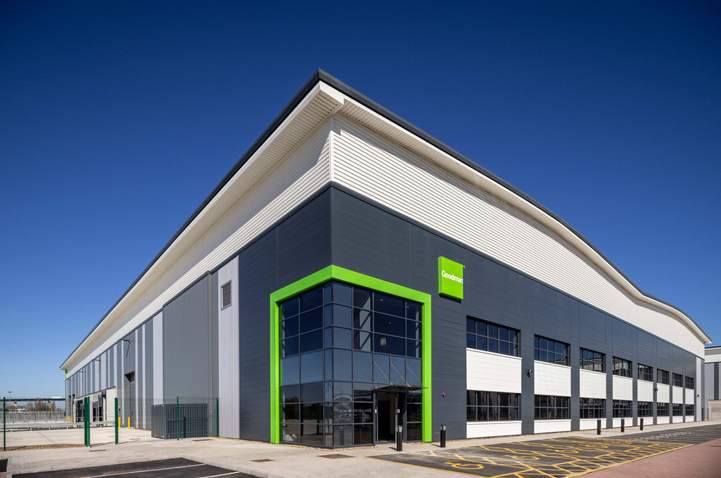New build take-up continues to dominate, accounting for 75% of the market as operational efficiencies and ESG increase in importance

Goodman’s Crossways Commercial Park provides 241,000 sq ft of speculatively developed space. Phase 2 could provide up to 220,000 sq ft. Savills is agent.
The supply of warehouses over 100,000 sq ft has increased in the last 12 months; however, with 16% currently under offer and the development pipeline falling 40%, vacancy rates are set to fall during 2024
Toby Green, Director, Head of London and South East
Supply
The last twelve months has seen supply increase by 78% to stand at 9.67m sq ft across 55 units. The rise is attributed to the 1.94m sq ft of speculative development completed throughout the year and a large amount of second-hand space returning to the market. The combined vacancy rate now stands at 6.83%, in isolation, the South East sits at 7.50% and London at 5.42%.
Analysing the quality of the current supply shows 38% is Grade A speculatively developed space, 33% is second-hand Grade A space, 13% is Grade B, and 16% is Grade C space. Currently, 72% of the total stock in London and 64% in the wider South East fail to meet the often requested EPC (energy performance certificate) B standard. Savills envisages that occupiers with lease events will continue to look to take advantage of the rising good quality supply and the benefits better quality units provide.
By unit count, there are 41 available in the 100,000–200,000 sq ft size band, eight in the 200,000–300,000 sq ft size band, five in the 300,000–400,000 sq ft size band, and one in the 400,000–500,000 sq ft size band. Savills rental growth forecasts suggest that in our baseline scenario, rents will increase throughout London and the South East by 4.9% per annum over the next five years.
Take-up
Take-up in 2023 has fallen 23% on 2023 due to the lack of larger (400,000 sq ft+) transactions. There was limited availability of larger buildings across the M1 Corridor, and BTS deals were very challenging to agree. Consequently, take-up has totalled 3.63m sq ft across 19 transactions – the average unit size was 191,228 sq ft. This year the South East accounted for 83% of activity and London 17%.
Occupiers continue to choose modern units to satisfy their requirements, with 45% of space transacted in 2023 being BTS space, 30% new speculatively developed space, 15% Grade A second-hand space, 4% Grade B space, and 6% Grade C space. Take-up has stemmed from a range of sectors: manufacturers have accounted for 24%, followed by grocery retailers at 17%, 3PLs at 15%, and the ‘other’ sector 15% which consists of alternative occupiers, including data centres and film studios. Wholesalers have also been active, totalling 12% of take-up throughout the last 12 months.
Development pipeline
The development pipeline has fallen by 40% from this time last year. Consequently, the supply of speculatively developed space will reduce in 2024. There are now 13 units under construction throughout the region, totalling 1.87m sq ft. In isolation, the South East has eight units under construction within the 100,000–200,000 sq ft size band and two within the 200,000–300,000 sq ft size band. London has three units under construction within the 100,000–200,000 sq ft size band.
.jpg)